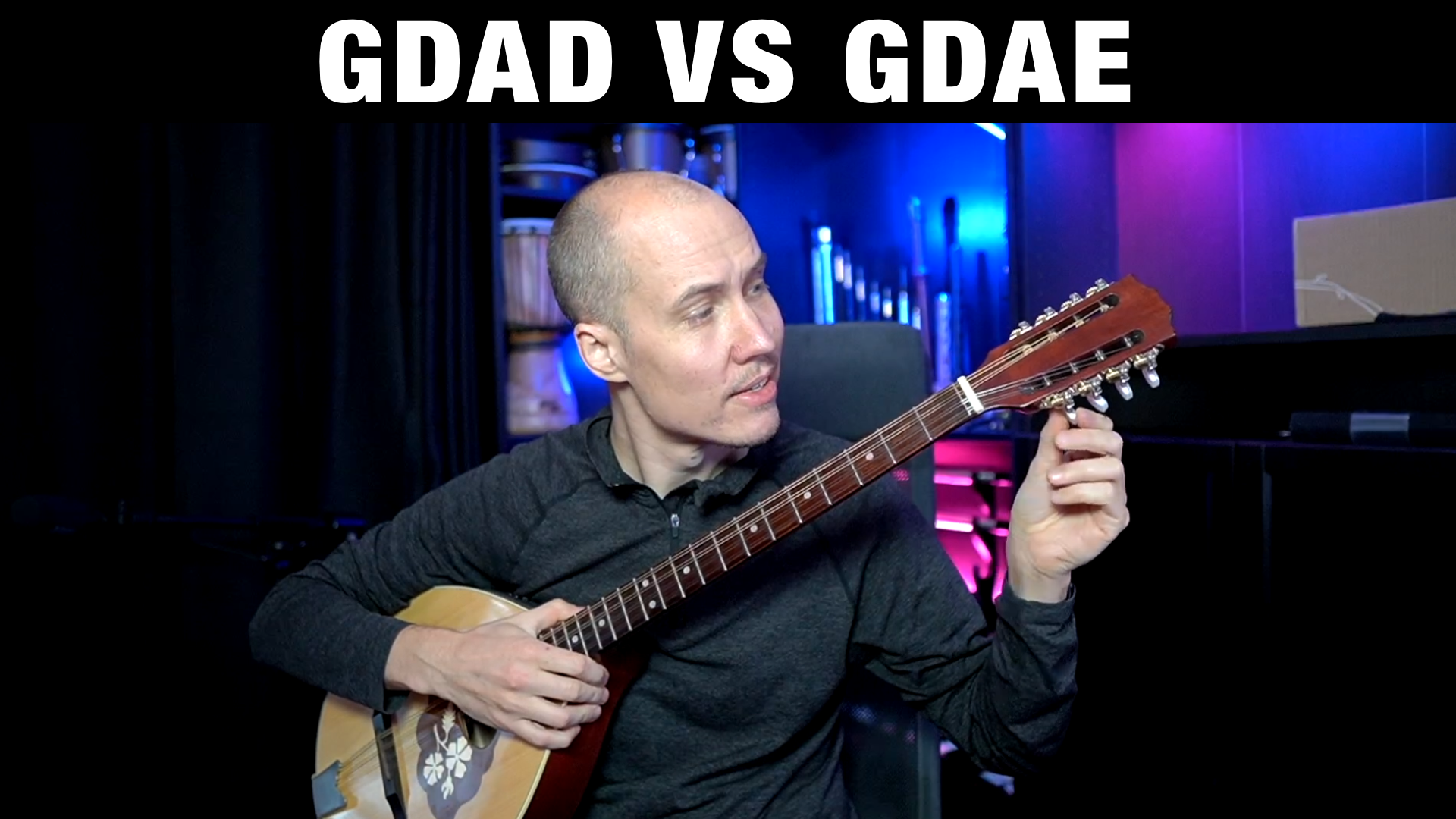 There 2 tunings that are common on the Irish Bouzouki: GADE, GDAD . Both of them have their advantages, so let’s explore which one you may prefer.
There 2 tunings that are common on the Irish Bouzouki: GADE, GDAD . Both of them have their advantages, so let’s explore which one you may prefer.
Bouzouki – GDAD Tuning
GDAD is an open tuning, which means when you strum the open strings you get an actual chord. This will be a G sus2 chord to be specific. This also means you can use a simple bar to play this suspended chord all over the neck.
You can also play on only the 3 higher strings with the same bar shape to get a “power chord”.
This makes the GDAD extremely easy to use for chords, backing and rhythm playing on your bouzouki. And since that is the most common use of this instrument, it has also become the most popular tuning of the Irish bouzouki.
Some people have even taken this open tuning further, by tuning up the low G string to an A, making it ADAD.
So the upside of the GDAD tuning is that the open tuning makes chords, backing and rhythm playing much easier, especially with that high D string that is very often used as a drone string (playing it open while dancing around on the lower strings).
Bouzouki – GDAE Tuning
This tuning is the “classic” tuning of most string instruments (violin, mandolin etc.). It is a tuning all in 5ths. Some people prefer this tuning on their Bouzouki since they find it easier to learn and remember the intervals because the interval between each string is the same (perfect 5th).
Another reason some players prefer the GDAE tuning is that they also play violin, mandolin or any other string instrument tuned in 5ths, and it has simply because engrained in their muscle memory.
But the most common reason people state for preferring to play in GDAE, is that they prefer this tuning for playing melodies on their bouzouki. You can of course play chords in this tuning too, but it is not as easy as the open tuning of GDAD.
